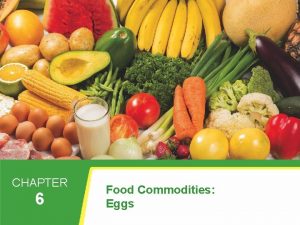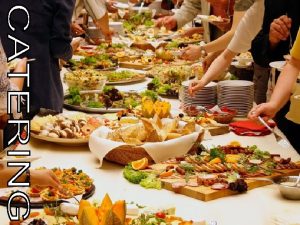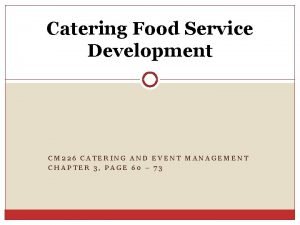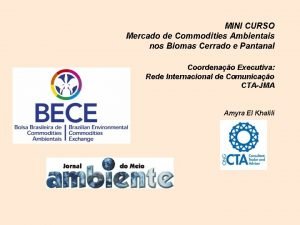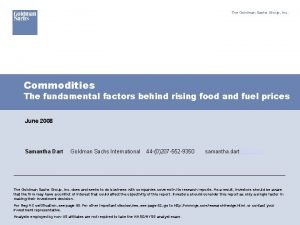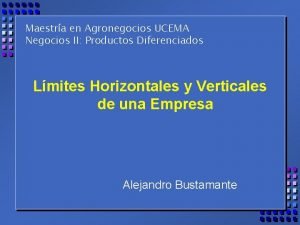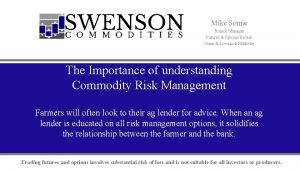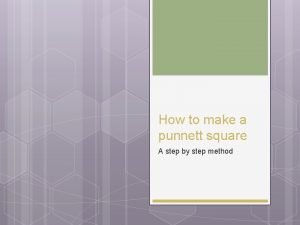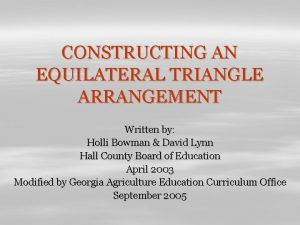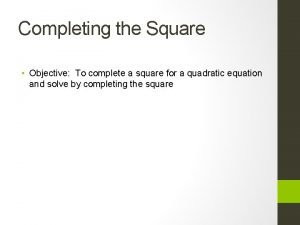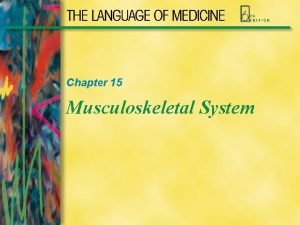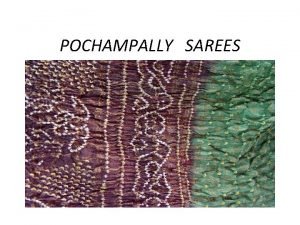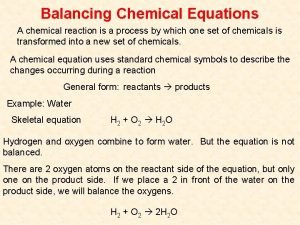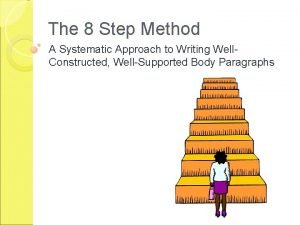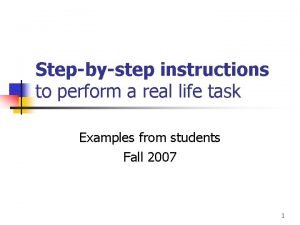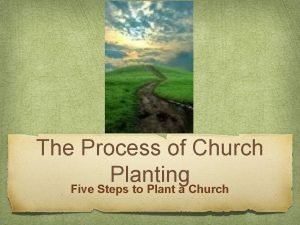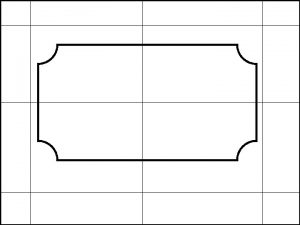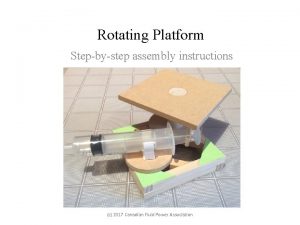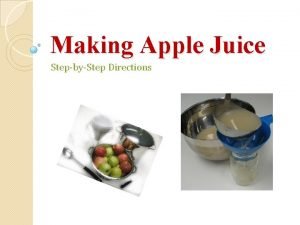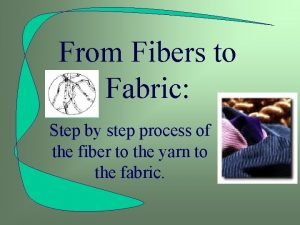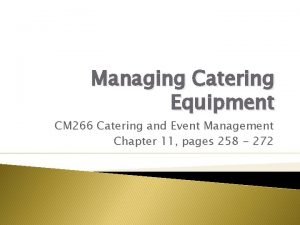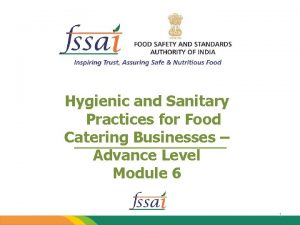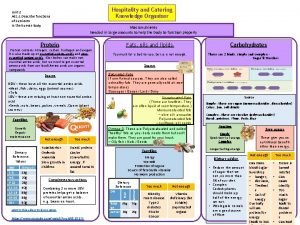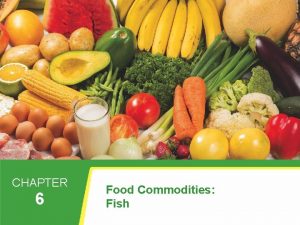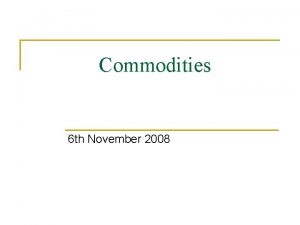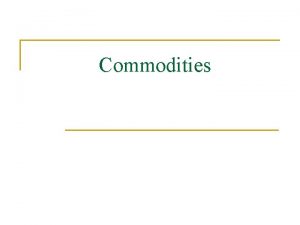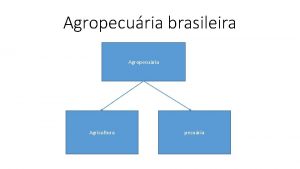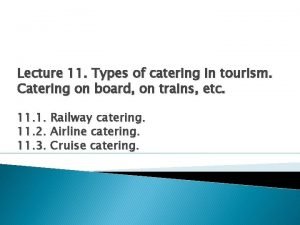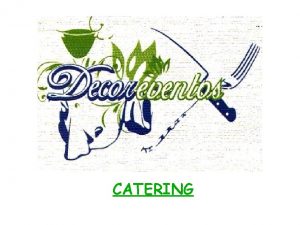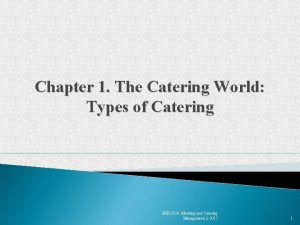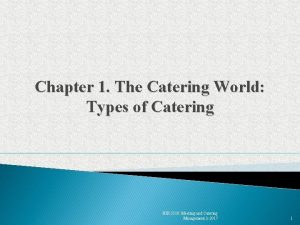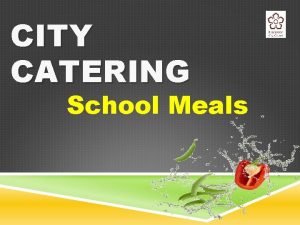Step Up Catering Food Commodities Level 1 M5049410


























































































































- Slides: 122

Step Up Catering Food Commodities Level 1 M/504/9410

n n n n n Aim: To give learners information on the basic commodities that may be used in the catering industry Objective: That the learners can identify and handle basic commodities: Vegetables & Fruit Meat, Poultry & Fish Rice & Grains Eggs Sugar Fats and Oils Herbs & Spices Pasta

Types of Root Vegetables. n Beetroot: Not usually used as a vegetable, but boiled and pickled and used in salads. n Celeriac: Celery flavoured vegetable looks like a rough skinned turnip. n Radish: This is usually used as a salad item and not served as a hot vegetable. n Salsify: Often called an Oyster Plant, due to its oyster type flavour.

Different Types of Roots. Black Salsify Turnip Carrot Parsnip

Different Types of Roots. Beetroot Kohlrabi Celeraic Swede

Different Types of Radish & Cress. Corn Salad Mustard & Cress Icicle Black Mouli Scarlet Globe & French

Types of Tuber Vegetables. n Potatoes: 40 different types: Early crop: May – August. Main crop Sept – May. n n Jerusalem Artichokes: Used in soups or served in a cream sauce. Sweet Potatoes: Used in stir-fry dishes, requires prolonged cooking, slightly nutty taste.

Types of Tubers n n n Yam: Flourish in tropical climates and are similar to sweet potatoes. Taro & Cassava: Also flourish in the tropics, both taste similar to potatoes. The Taro goes a greyish green colour when cooked. Jicama: a Tropical tuber popular in Mexican dishes.

Different Types of Potatoes. All Purpose Yellow New All Purpose White Baking Orange Sweet Salad Potato Blue Potato Yellow Sweet

Different Types of Tuber. Taro Cassava Jerusalem Artichoke Jicam a Yam

Types of Bulb Vegetables. n n n Onions: All year round, should have a firm and crisp outer skin. Spring Onions: Best between May – September, used in salads and Chinese cooking. Shallots: Best between September – October, classed as best bulb.

Types of Bulb Vegetables. n n n Leeks: All year round, must be well washed before using. Chives: Best between May – August, used mainly as a garnish. Garlic: All year round, best garlic comes from France.

Different Types of Bulbs. Pickling Onion Banana Shallot Garlic Shallot

Different Types of Bulbs. Leeks Spring Onions Welsh Onions Tree Onion

Different Types of Bulbs. Red Onion Spanish Onion Yellow Onion Vidalia

Types of Leaf Vegetables. n n Cabbage: 4 main types, Green, Red, Chinese & Spring Green. Curly Kale: Very dark leaf, no heart / core. Sprouts: Should be small, compact with tight leafs. Sorrel: Used in salads or cooked like Spinach.

Types of Leaf Vegetables. n n Spinach: Deep green leaves, high in Iron. Chard: Dark green leaf with white coloured stems. Lettuce: Used in salads, wash thoroughly. Watercress: High in Iron, store in iced

Different Types of Lettuce. Butterhead Iceberg Webb’s Rocket

Different Types of Lettuce. Curly Endive Loosehead Chicory Mizuna

Different Types of Lettuce. Cos Escarole Radicchio Lollo Rosso

Different Types of Green Leaf. Nettles Purslane Sorrel Dandelion

Different Types of Green Leaf. Spinach Greens Chinese Greens Spring

Different Types of Green Leaf. Beet Greens Watercress Curly Kale Bok Choy Chinese Leaves Swiss Chard

Different Types of Leaves. Red Cabbage White Cabbage Sprouts

Types of Flower Head Vegetables. n n n Cauliflower: Best between March – December, should have bright white head. Broccoli: All year round, firm green or purple heads. Globe Artichoke: Best cooked with piece of Lemon attached to the bottom.

Different Types of Flower Head. Cauliflower Globe Artichoke Purple Cauliflower Broccoli Purple & Green

Types of Stem Vegetables. n n Celery: Used in Bouquet Garni, Soups or salads. Chicory: Used as lettuce. Fennel: Bulb like with a strong flavour, used in salads. Asparagus: 3 main types with white, green & purple heads.

Types of Stem Vegetables. n n Cardoon: A relation of the Globe Artichoke prepare like Celery. Fennel: Bulb like with a strong flavour, used in salads. Asparagus: 3 main types with white, green & purple heads. Fiddlehead Fern: A mixed flavour of Asparagus & French Beans.

Different Types of Stem Vegetables. Celery Cardoon Fern Fennel Asparagus Fiddlehead

Types of Legumes & Pods. n n n Broad Bean: Can be used as a salad item, mainly used as a hot vegetable dish. French Bean: Used as a hot vegetable dish. Runner Bean: Large ones can be stringy and tough.

Types of Legumes & Pods. n n n Mange tout: Crisp flat underdeveloped pea. Stir-fried or sautéed. Peas: Should be firm and crisp, sugar snap peas should be cooked like Mange tout. Kenya Beans: Similar to French bean but grown in Kenya.

Different Types of Pods & Legumes Sugar Snap Haricot Broad Garden Peas in pod

Different Types of Pods Mange tout Bean Bobby Bean Runner

Types of Edible Fungi. n n Only purchase Fungi (Mushrooms) from reputable suppliers, do not use fungi that you are unsure of. Some Fungi are poisonous and great care is needs to be taken to avoid them.

Types of Edible Fungi. n n n Cep: Flat and brown in colour. Chanterelle: Also known as Egg mushroom. Morel: Very expensive, holes all over the mushroom.

Types of Edible Fungi. n Open: Mostly used in general cooking. n Closed: Mostly used in general cooking. n Truffle: Black or White. n Shiitake: Flat topped.

Different Types of Mushrooms & Fungi. Oyster Horn of Plenty Chanterelle Hedgehog Fresh Cep Chestnut Button Shaggy Ink Cap

Different Types of Mushrooms & Fungi. Shiitake Enoki Black & White Truffle Horse Fresh Morel Dried Morel Parasol

Different Types of Mushrooms & Fungi. Dried Cep (Porcini) Portobello Giant Puffball Dried Cloud Ear Straw

Types of Vegetable Fruits. n Tomato: Should be ripe and red, Cherry, Beefsteak, Plum. n Avocado: Must be ripe, soak in Lemon juice after preparing. n Aubergine: Egg plant, when prepared sprinkle with salt, removes excess water. n Cucumber: Used in salads, baby cucumbers are called Dills. n Capsicum: Peppers, green, yellow, red, black, white, orange.

Types of Vegetable Fruits. n Courgette: Also known as by their Italian name Zucchini. n Okra: Also known as Ladies fingers. n Baby Sweetcorn: Good source of Vitamin C & B 1. (Marrow and Courgette are also known as a fruit). n Marrow: Best cooked by steaming or Par boiling. n Squash: Two types Summer & Winter Squash.

Different Types of Tomatoes. Cherry Sun Dried Tomatillo

Different Types of Tomatoes. Beefsteak Plum

Different Types of Aubergine & Avocado. Aubergine Purple Aubergine White Aubergine Avocado Hass & Winter

Different Types of Cucumber. Ridge Cucumber

Different Types of Capsicums (Peppers). Yellow Green Red

Different Types of Chillies. Jalapeno Ancho Bird Large Dried Anaheim

Different Types of Fruit Vegetables. Okra (Ladies Fingers) Baby corn & Corn on the Cob Pumpkin

Different Types of Winter Squash. Acorn Butternut Turban Hubbard

Different Types of Summer Squash. Pattypan Chayote Yellow Straightneck

Types of Aqueous Vegetables. n Courgette: Also known as by their Italian name Zucchini. n Marrow: Best cooked by steaming or Par boiling. n These types of Vegetables are also Fruit Vegetables.

Different Types of Aqueous Vegetables. Spaghetti Marrow Courgette Vegetable Marrow

Meat- Beef is the red meat of cattle which is slaughtered between 18 months and 2 years, it is then cut into quarters, 2 hindquarters and 2 forequarters and hung for between 7 – 21 days. Each quarter will weigh approximately 90 kilo. The butcher will then cut each quarter into joints cut from the hind or forequarter of beef and then prepared by the establishment for their own use or the butcher could prepare the beef to the customer requirements. 1 2 3 4 5 6 7 8 9 10 11 12 13 14 15 16 17 Cut Shin Topside Silverside Thick Flank Rump Sirloin Wing rib Thin flank Fillet Fore rib Middle rib Chuck rib Sticking piece Plate Brisket Leg of mutton cut Shank

Meat- Lamb In general terms sheep under 12 months of age are referred to lamb in the UK, whilst New Zealand lamb exported to the UK is usually less than 6 months of age. Over 12 months lamb is known as hogget or mutton. Cut 1 Shoulder 2 Leg 3 Breast 4 Middle neck 5 Scrag end 6 Best end 7 Saddle

Meat- Pork Approximately 95% of pork produced in Britain is home produced. The keeping quality of pork is less than that of other meat, therefore it must be handled, prepared and cooked with great care. Pigs are slaughtered about 10 -12 months old 1 2 3 4 5 6 Cut Leg Loin Spare rib Belly Shoulder Head

Fish Preparation methods Washing fish is important to remove any blood or mess that occurs during preparation. Trimming This is the removal of fins, gills before filleting using a sharp knife or scissors. It can also mean when the fish or fish portions are cut to remove any edges which would spoil the appearance and presentation of the finished dish. Scaling This is when scales are removed from scaly fish using the back a knife scraping against the lie of the scales. i. e. from tail to head. The fish should then be washed. Pin boning This is the removal of the fine bones usually in large fish such as salmon using pliers/ tweezers or a vegetable peeler.

Filleting This is the removal of the flesh off the bone there are 4 fillets on a flat fish and 2 fillets on a round fish Filleting flat fish Cut around the head with a filleting knife to the lateral line, this is the line which runs down the centre of the fish. Cut down the lateral line to the tail. Bending the filleting knife using long smooth stroke the full length of the fillet remove the fillet keeping the knife against the ribs at all times. Remove the remaining 3 fillets Filleting round fish The fish must be gutted and trimmed Remove the head cutting behind the gills Remove the fillet by cutting along the backbone from head to tail, keeping the knife as close to the bone as possible. During this process it is necessary to cut through the pin bines which will be removed later. Repeat step 3 on the other side Remove the pin bones using tweezers or pliers

Skinning This is the process of removing the skin from fish fillets or in the case of Dover Sole, whole fish. When skinning it is important not to damage the flesh Skinning fillets Place the fillet on a chopping board skin side against the board. Using a filleting knife for small fillets and a chopping knife for large fillets. Cut into the flesh to the skin as close as possible to the tail end at an angle of about 45 �. Take a firm hold of the tail skin and using a sawing action move both the skin and the knife, pulling the skin towards you and the knife away from you. The flesh should come away from the skin. It is important to keep the angle of the knife at 45 �as too slight an angle and the knife will cut into the flesh and too steep an angle and the knife will cut through the skin. If the skin is accidentally cut through start the process again from the head end of the fillet. Once the skin has bee removed trim and use as required

Grains in to Flour. What do you know? Uses for flour Base for cakes, bread, batters and pastries. It can also be used to thicken sauces and soups Production of flour – milling The endosperm of the wheat grain consists of many large net-like cells in which the starch grains are stored. These cells also contain gluten which is an insoluble protein n

What is flour made from? Wheat which has been milled n Why does the flour become whiter during the milling process? Because the bran and wheat germ are removed during this process n n So the more the flour is processed the less bran and wheat germ is left.

n 1. 2. 3. 4. Milling process includes: Breaking up of the grain Sifting Blending Grounding Gluten – what does it give when kneaded? Elasticity Strength Structure to the product Absorbs water

Goods must be kneaded if yeast has been added; this will help the gluten develop Self-raising flour , this is a soft flour which has had baking powder added to it. The baking powder is a raising agent and when liquid is added to it - it produces carbon dioxide gas which will help the baking to rise There are many types of flour for sale, it is important to use the correct flour for the baking you are doing. A recipe will usually tell you which flour you need to use. The main ones being: 1. Strong flour 2. Soft flour 3. Self-raising flour 4. Wholemeal/Wholegrain flour n

Rice n n Rice is a cultivated grass which can grow on wet or dry land has been used as a food source for thousands of years. It is the second largest cultivated food source in the world. It is grown in many countries but mainly China, India, Africa and America. The seeds are milled to remove the tough outer husk to produce brown rice; further milling the germ and bran are removed to produce white rice Rice can be used for may dishes either hot or cold and in savoury or sweet dishes. Food value n It is a source of protein but lower than other cereals and when the bran is removed there is a loss of vitamin B Types of rice There are 3 main types of rice n Long grain – narrow shape, roughly 4 times longer than wide. The structure remains firm and the whole of the grain will remain separate when cooked and is used for braised, boiled rice n n Short grain – this has a round shape and has a softer when cooked and therefore releases starch and is sticky and is used for risottos and paellas Round grain – like short grain and when cooked releases more starch and is used in sweet puddings

Other types of rice n Brown rice this is very nutritious long grain rice and when cooked it has a chewy texture and a slightly nutty flavour. n Basmati rice is an Indian long grain rice and is possibly one of the best because of its nice aromatic flavour n Arborio this is Italian round/medium grain rice and is ideal for risottos n Wild rice this is not a true rice but a water grass which grow in North America n Carolina a short round grain and is used for sweet puddings n Parboiled rice this is subjected to steam and pressure and is dried before milling. This process gelatinises the starch and keeps the nutrients in. the rice absorbs liquid during cooking and therefore gives a better yield. the grains remain separate n Rice flour this is rice which is ground and sifted. It is used as a thickening agent in some soups and in some baked products such as cakes. n Quality points of rice n Before using rice check for the quality by n It has been correctly stored n It is dry n There are no contaminants – stones, dirt n Its in its original packaging unless it has been transferred to another storage container

Fats and Oils

Vegetable oils – obtained from the seeds of plants Olive Oil –the finest of all vegetable oils and one of the oldest oils used in cooking, it can be dated back 3, 000 years The ripened fruit of the olive tree that is grown in Italy, Spain and Greece The oil comes in four ratings based on the processing of the oil This oil is excellent for use in Salads and in cooking Walnut Oil – this is a very aromatic oil extracted from the kernel of the nut. This oil is very expensive and is used to add a ‘nutty’ flavour to salads etc. Corn Oil – This is the most popular oil for cooking and also in the production of margarine. The oil is extracted from maize. Peanut Oil – also known as groundnut oil, comes from South America and is used in making margarine, cooking, salads and in canned fish Sesame Seed Oil – an aromatic oil made from the seeds of the sesame plant Grape Seed Oil – Used in the making of margarine and used in salad dressings Avocado Oil – Taken from the pulp of damaged avocado fruit and used in good cooking oil Sunflower Oil – A bland oil that is used in cooking or the making of margarine, oil is extracted from the seeds of the flower

Animal Fats This fat is found mainly in the layers under the skin or surrounding the vital organs. Suet - This fat is found around the kidney region of animals, It is a hard, flaky fat and is brought either fresh or shredded. Beef suet is the best and most commonly used. It is used in suet past, stuffing, mincemeat and Christmas Puddings Lard – This is rendered fat from the ‘pig’. Lard has an almost 100% fat content. The fat comes from the loin or kidney region of the pig. Rendering is the extraction of the fat by melting, this is done in large vats using steam at high pressure. It is used in Short paste, Water Paste, Deep and Shallow frying Dripping – this is clarified animal fat Used in Basting of roast meats, brown soups and sauces

Butter - A product using cows’ milk n 1. 2. 3. 4. 5. 6. 7. Butter varies in flavour and colour depending on: Breed of cow Type of feed the cow was fed The method used in the making of the butter Whether it was a ‘blended’ butter If salt or colouring has been added The grade of the butter Method of packing and storage Different types of Butter: n Fresh Cream butter- comes from U. K , Ireland New Zealand n Ripened Cream Butter – Denmark and other European countries( silver foil wrapped ) n Blended Butter – made from butters from different countries. This is done to produce a butter that is of the required quality but at a cheaper price

Margarine – a butter substitute Invented in 1887 by a French Scientist n As it is a substitute for butter its contents and labelling are strictly controlled Margarine is a refined and purified oil which is ‘hydrogenated’ a process which adds hydrogen turning the oil into a fat ( solidifies ) Many types of margarine can be made by: 1. Varying the fats and oils used 2. Flavourings 3. Colouring 4. Water content ( Max 16% ) All margarines have Vitamin A and D added n Types of Margarine: n Soft margarine – used as a butter substitute n Pastry margarine – used in Puff Pastry as it has a higher melting point, can be handled a lot n Cake Margarine – higher creaming properties

Shortenings Originated from the U. S. A n n • 1. 2. 3. 4. Made from vegetable oil with the addition of some lard. Manufactured in a similar process to margarine but without the addition of water This is a white ‘aerated fat’ used as a substitute for lard, used in cake and pastry making Storage Points for Fats and Oils All fats are perishable and need to be stored correctly They should be stored away from strong smelling food as fats absorb flavour Hard fats should be kept in its own wrapper or in sealed containers to reduce exposure to light and air which caused ‘rancidity’ Stored in a cool place Butter should be stored in a refrigerator, it can also be frozen.

Sugar

Sugar Produced from: Sugar Cane and Sugar Beet

Sugar Cane is grown on plantations and requires a hot climate and plenty of water to grow

Sugar Cane Examples of countries where sugar cane is grown: Brazil India Cuba China Australia Mexico U. S. A Thailand n Takes 12 -18 months to mature and can grow to the height of 5 metres. The sugar is obtained from the stalk 14%- 17% sugar content. In the past heavy knives called ‘machetes’ were used but these days large machinery is used to harvest the cane. Once cut it is rushed to the factories for processing- sugar mills n

Sugar Beet Similar in shape to a fat parsnip. Grows in Great Britain and is harvested in mid September. It is also grown in: U. S. A Canada Russia China Japan Europe n

Sugar Beet n n n Sugar beet is known as a good rotation crop as it benefits the soil structure. They never grow beet in the same field two years running but rotate with cereals and other crops. In its first year the beet produces sugar in the second year the sugar is used by the plant to seed and flower. The beet is sown in March and machines are used for drilling, weeding, fertilizing, spraying and harvesting. Harvesting takes place from September through to the end of the year. The green tops are used as Animal Feed or Fertilizer ( ploughed back into the soil ) Once harvested it arrives at the factory is washed, weighed, sliced and then boiled

n Types of Sugars Brown sugars These are the unrefined raw sugar Some of the names refer to the country of origin E. g. Barbados, Trinidad, Demerara These sugars are used in cookery for colour and flavour. The darker sugars are used in rich fruit cakes n Dark brown soft n Light brown soft n Demerara These sugars are coated with black treacle so will form into a lump if stored too long

White sugars n n n Preserving sugar – large white crystals used in jam and jellies Granulated – Used for general sweetening purposesis not suitable for cake making but is suitable for boiling Caster sugar – Fine crystals used in cake making as it is easily mixed in and when beaten with fat helps in aerating the mixture Icing sugar – This is made by pulverising crystals till a powder and then sifting. It is used in Royal icing, water icing and for dusting cakes Sugar nibs – these can be ‘course’ ‘medium’ ‘fine’ used as a topping on cakes/buns e. g. Bath buns Cube sugar – compressed moist sugar crystals that is

Processing of Sugar beet Stage 1: The beet is washed and sliced and placed in cylinders with hot water. This extracts the sugar from the beet into the water ( left over beets are mixed with molasses for animal feed ) Stage 2 : The sugar juice is clarified by adding milk of lime and carbon dioxide Stage 3 : The water is boiled off leaving a thick syrup Stage 4 : The thick syrup is concentrated in vacuum pans until crystals form Stage 5 : Left over syrup is removed by ‘centrifuge’ (spin dryer ) Stage 6 : The crystals are dried with warm air and packed

Sugar Cane Stage 1 : The cane is cleaned, cut into small pieces and then shredded Stage 2 : Heavy rollers extract the sweet juices. The left over cane is known as Bagasse and is used for wood and paper Stage 3 : The brown juice is heated in large tanks, lime is added to remove the scum/sediment which is achieved in two ways: 1. Make a scum form on the surface 2. Sediment will stick to the lime and sink to the bottom of the tank

Stage 4: The clear juice is boiled to a syrup until sugar crystals appear Stage 5: Centrifugal machines ( industrial spin dryer ) spins off the syrup leaving the brown crystals known as ‘raw cane sugar’ The dark sweet syrup which remains is known as ‘molasses’ and is used in bakers yeast, rum making and cattle food Unrelated sugar product: Honey : made in the hive by bees from the pollen collected from flowers

By products and storage n n n 1. 2. 3. 4. 5. Golden syrup – After boiling ceases to yield crystals the amber liquid is filtered and concentrated Black treacle – made from cane molasses and sugar Storage – Sugar should be stored carefully as: insects, birds, animal, rats and mice love to eat sugar ( high energy food ) It will also form into lumps if it becomes damp. Golden syrup, black treacle and the raw sugars should not be brought in large amounts or stored for too long as crystals will form on liquid sugars and raw sugars will stick together and form a solid lump. Sugar should be stored in a cool dry place, in a bin/container which has a tight fitting lid. Each bin/container should be clearly labelled.

Eggs

Eggs The name refers to any edible egg that can be eaten from various birds: n Hens n Duck n Quail n Geese Hen’s eggs are the e most widely used and is a ‘store cupboard’ staple being both nutritious and versatile. Eggs are graded by size - small, medium, large and extra large and quality A, B and C. This grading comes under EEC rules and the classifications are: n A - Best grade with intact shells and a perfect inside n B. May have dirty shells or unwashed shells, but shells are intact n C. The shells may be cracked - these are often used by large-scale food processors


Eggs that are pre-packed must detail the following information on the box n Size n Quantity n Quality grade n Packing date n Best before date n Price n Packing station number n Name of producer It is essential that in any salmonella outbreak the source can be found - hence the inclusion of producer

Important hygiene rules must be followed when using raw, un-pasteurized eggs; this is to ensure the avoidance of salmonella food poisoning: n Store eggs in a cool dry store - preferably a refrigerator until just before use n Do not use cracked eggs n Store away from foods that may lead to contamination e. g. raw meat n Eat as soon as possible once prepared n When possible avoid the use of raw egg in items where there is little or no cooking e. g. meringues, mousses, mayonnaise. This is especially important when providing food for the elderly, convalescents or expectant mothers.

n n Caterers can also buy eggs pasteurized these come in three forms: Dried - the egg is pasteurized, glucose removed and then dried, this has a shelf life of 12 months but should be used following manufactures guidelines once opened. Dried egg is available whole egg, egg yolk, egg white or a egg/milk mix Liquid - this is fresh whole egg/egg white/egg yolks and must be stored in a refrigerator. Deliveries of liquid egg should be regular and egg should be used within ’ best before date’ Frozen - Eggs have been blast frozen once removed from shells and mixed - must be stored in a freezer ‘use by date’ checked

Several changes take place as the egg ages this can be clearly seen if the egg is cracked onto a plate n Membrane of the yolk weakens allowing water from the white to enter n Egg white becomes thinner Diagram of egg: freshest – stale The air space within the egg also increases this allows an egg to be tested by floating in brine n The outer shell has an unseen layer that will break down along with the inner membrane allowing bacteria to enter the egg n A rotten egg will give off an intently unpleasant odour once cracked - this is due to the sulphur in the white reacting with the phosphoric acid in the yolk Nutritional Information n An egg yolk contains protein , fat, vitamins ADEK and iron and is 50% water. The white contains protein, B vitamins and a trace of fat - 88. 5% of the white is water n


Spices

Spices – Hot and Dry What are spices? n Spices are the fragrant or aromatic parts of plants n Spices are used to flavour food and drinks n Spice plants grow mainly in tropical or sub-tropical climates The Asian tropics provide: Cinnamon, cloves, pepper, cardamom, ginger, nutmeg, turmeric, mace and nutmeg The American tropics provide: Allspice, vanilla and chilli

History of Spices n n n The history goes back thousands of years, it is known that spices were used by the Ancient Egyptians. They were used for flavourings, food preservatives, medicine, antidotes to poisons and used in the magic arts practiced by many ancient civilisations. Spices were rare and very expensive and lives were risked to bring them in from the tropics. The Arab world were in charge of the spice trade and guarded their supply and use – it wasn’t until the conquering Romans were in charge that the use of spices spread throughout the world. The ancient Greeks also used spices and spread their use around then known world.

Around the 13 th century the crusades and explorers introduced the spices from the countries that had been visited and European eating and cooking habits started to change. Power to control the spice trade went on for many centuries and many large companies were set up e. g. British East India Company (17 th Century ) Eventually Britain was established as the leader of the spice trade with its base in Mincing Lane, London (19 th Century )

Pepper – the most important spice n n It now accounts for a quarter of the world trade in spice. In the Middle Ages it was so precious that it was counted peppercorn by peppercorn (one at a time) Rents, dowries and taxes could be paid with pepper – giving the term ‘peppercorn rent’

Storage of Spices n n Spices are sold in small quantities and should be stored in the same way – the flavour will lessen if kept too long Spices need to be ‘fresh’ either freshly ground or straight from a new small drum. Spices should always be stored in ‘air-tight’ containers, away from direst sunlight and away from any direct heat You can tell if a spice is fresh by doing the ‘nose’ test – if the aroma doesn’t ‘greet’ you then its time to replace the spice.

Use of Spices Always use sparingly, especially with the hot, pungent spices – more can be added once you have tasted the dish When to add spices: n Cakes and pies – add when mixing n Uncooked dishes; add early in preparation to allow flavour to develop n Casseroles, curries, stews etc. add at the beginning of cooking n Grills – add at the beginning of cooking by rubbing into the meat n

Processing of Spices Only the very best spice is gathered and used n The impurities are removed by sifting n The spices are then purified ( using heat ) to prevent bacteriological contamination The spice is then milled if required as a powder – this is done at a low temperature so that the oils are retained The spice is then packed and sealed. n

Types of Spices Allspice: Berries of the allspice tree and is like a mix of nutmeg, cloves and cinnamon Can be used in virtually anything, from salads to desserts n Anise : Seeds of the anise plant the flavour is sweet and tastes similar to liquorice Used in in biscuits, sweets and pastries; also in poultry dishes n

Black pepper: Berries of the pepper tree the spice pungent and hot Used as condiment and in any dish you wish to add flavour (mildly hot ) n Caraway: Seeds of the caraway plant the flavour is sweet, nutty. Used in Hungarian goulash, biscuits and cakes, apple sauce, herbal vinegars Cardamom: Seeds or pods from the cardamom tree a member of the ginger family and is sweetly spicy Used sparingly in stews and curries as it has a strong taste. n

Cayenne Pepper: Ground dried fruit or seeds of the cayenne pepper plant it is fiery hot Can be brought dried and ground. Use sparingly - it's very hot and can be used in anything you want to taste hot. Warning: the seeds are extremely hot, so wash your hands thoroughly after handling. n Celery seeds : Seeds of the celery plant and has a strong, pungent celery flavour. Can be used as a replacement for celery stalks in cooking; as a flavouring in tomato juice, sauces and soups n

Chilli powder: -dried, ground chilli peppers. Is spicy, hot (heat depends on variety of chilli pepper used) Use in chilli or other spicy dishes n Cinnamon: Dried bark of the cinnamon tree and is pungently sweet. Can be used as dried sticks or ground powder in sweet dishes or in curries and stews n Cloves: Dried flower bud of the clove tree its flavour can be either sweet or bittersweet Add to sweet dishes or as a contrast in stews and curries. n

Coriander : Seeds of the coriander plant it is spicy, and can be sweet or hot Can be used in cakes, biscuits, breads, as a pickling spice or in curry mixtures n Cumin: Seed of the cumin plant with a peppery taste Soups, stews, sauces. Use sparingly. n Curry powder : Mix of several ground spices Hot to very hot should be used sparingly- taste the dish to gauge heat level n

Fenugreek: Seeds from the fenugreek plant Sweet like burnt honey. Used in pastries, as a flavouring for meat dishes and beverages, and to make syrups Ginger: Roots of the ginger plant – flavour has is a mix of pepper and sweetness. Used in cakes, breads, biscuits, as well as Asian dishes Green peppercorns: Immature berries of the pepper tree with a mild, slightly sweet flavour and are preserved in brine used in vinegars and sauces

Mace : Outer covering of the nutmeg seed Similar to nutmeg, but stronger can be used in custards, cakes, fruit desserts Brown mustard: Seeds of the mustard plant also known as Oriental mustard. Pungent, hotter than yellow mustard and used in pickling, as a seasoning, or in preparing Oriental mustard sauces Yellow mustard: Seeds of the mustard plant and is with less of a bite than brown mustard , the whole seeds may be used boiled with cabbage, or as a garnish for salads.

Nutmeg: Seeds of the nutmeg tree with a warm, spicy, sweet flavour. Used In cakes and biscuits, milk based dishes like egg custard in some potato dishes and Mediterranean dishes like Mousaka Paprika : Fruit from a sweet pepper plant – can be sweet to hot used in Hungarian dishes including goulash, in soups and potato or egg salad Poppy seeds: Seeds from the poppy flower - nutty flavour In cakes, breads and salad dressings.

Saffron: Dried stigmas of the saffron crocus. Pungent, aromatic adds flavouring and colouring in rice, stews, curries and fish. This is the world's most expensive spice n Sesame seeds: Seeds of the sesame plant, nutty flavour used in breads and in salad dressings n Star Anise: Star-shaped fruit of a tree native to China flavour is very similar to anise Used in chicken or casserole dishes especially those from the Far East n

Turmeric: Root of the turmeric plant, a tropical plant related to ginger with a pungent, bitter flavour. Used in curries, East Indian recipes. Vanilla: Beans from the vanilla orchid Sweet, highly aromatic used in desserts including ice cream, puddings and cakes White Pepper: Peeled and dried green peppercorns from the pepper tree, Similar to black peppercorn, but milder

Herbs

Herbs n Cool and Green

Herbs – ‘Cool and Green’ Herbs are used in cookery for flavouring and to aid digestion. They are easily grown and can be used fresh or dried. They have a soft stem (trees and shrubs have a woody stem) and it is the leaves that contain oil that gives the smell and flavour. Herbs were once used in cookery to preserve food and to make dishes more palatable and digestible. Nowadays they are used to give flavour especially in modern convenient foods that can be bland. Herbs can be added to: n Soups and stews - added with the stock n Sprinkled on roasts near the end of cooking n Sauces - add during cooking n Vegetables - added during cooking n Steaks and chops - sprinkle on meat during cooking

n Herbs that are dried and brought in the shops are from the best quality fresh herbs. The herbs are processed by: n Removing all dirt, leaves, and twigs by sifting. n The herbs are then cleaned to prevent contamination by bacteria. n The herb is processed at a low temperature to keep the important oils in the herbs. n Herbs can also be frozen; they have a much fresher appearance than dried herbs. n Dried herbs once placed in sealed containers will keep its flavour for about 18 months. Once the container is opened they will start to lose their smell and flavour.

Types of Herbs There are many types of herbs the main ones used in cookery are: n n n Mint – there are many varieties of this herb and are used to flavour peas and new potatoes and in the making of mint sauce Parsley- this is our most commonly used herb used for both flavour and in the decoration of completed dishes. There are several varieties of this herb – curly leaf, flat leaf etc One of the ‘fines herbs’ Basil – this has a pungent flavour which goes well with tomato dishes. Bay leaves – Used in a bouquet garni and added to stock, stews, braised dishes etc Chives – this is a member of the onion family and has a delicate onion flavour. One of the ‘fines herbs’ Oregano – A Mediterranean herb - the ‘ pizza ‘ herb used in Italian and Greek cooking

n n n n Rosemary – Very strong flavour so should be used in small amounts – good with lamb Thyme – Used in ‘ bouquet garni’ to flavour stews, soups sauces Chervil – this has a delicate flavour and is one of the ‘fines herbs’ Tarragon – Used in sauces and is one of the ‘fines herbs’ Marjoram – A sweet herb that can be used in salads and with pork, poultry and fish Sage – a strong, bitter herb, aids the digestion of rich fatty meats. Often used in stuffing mixes Bouquet Garni – Usually made up of thyme, basil, oregano, marjoram and bay leaf – varies dependant on dish being used in or chef’s preference Not a herb but used in many dishes now because of its flavour is Garlic is part of the bulb family.

Task Sheet -Herbs n Using the handout ‘Herbs and Spices’ complete the work below: 1. What herbs are used in a ‘bouquet garni’ 2. Which is the ‘pizza herb? ’ 3. Which herb is the classic accompaniment for Roast Lamb? 4. Which herb looks like fresh grass? 5. Name the herb that is used in tomato and egg dishes 6. What is the flavour of tarragon? 7. Which herb looks like pine needles? 8. Which herb is grey/green in colour 9. Which area of the world supplies most of the herbs? 10. How should you think of herbs?

Pasta Who Invented Pasta? n The Chinese, The Italians or the Indians? § The Chinese – Eaten pasta as far back at 5, 000 BC. § The origins of 'macaroni' in Italy go back as far as the time of the Ancient Romans who gave the credit to the 'Gods’ § Italian Marco Polo brought it back to Italy from China in the 13 th Century A. D

n What Is Pasta Made From? §The word pasta comes from the Italian word for paste, meaning a combination of flour and water §Top quality pasta is made from durum wheat semolina (flour). §When pasta is made the aim is to convert the flour of the durum wheat semolina into an product we can eat. How Is Pasta Made? 1. Blending of flour and water 2. Kneading and mixing of the dough 3. Shaping the Dough 4. Drying 5. Packaging and Distribution

Pasta Shapes n There are more than 600 pasta shapes world wide Macaroni - Can be topped with any sauce, baked, or put in soups, salads and stir-fry dishes Rotini ("Spirals" / "Twists or Fusilli ") - Rotini's twisted shape holds bits of meat, vegetables and cheese, so it works well with any sauce Bow Ties, Farfalle ("Butterflies") - Bow Ties brighten any meal with their interesting shape. Thick enough for any sauce, or make into a salad or soup Jumbo Shells (“Conchigle”) - Best when stuffed with your cheese, meat or vegetables.

Spaghetti ("A Length of Cord“) - Spaghetti Bolognese – The UK and USA’s favourite pasta dish. Wagon Wheels, Ruote ("Wheels") - Wagon Wheels make interesting salads, casseroles and stir-fry dishes. Add to soups, or simply top with sauce and enjoy Lasagne (From "lasanum, " Latin for pot) - Create new Lasagne casseroles by using chopped vegetables, cheeses and any kind of sauce. Rigatoni ("Large Grooved") - Rigatoni's ridges and holes are perfect with any sauce, from cream or cheese to the chunkiest meat sauces


Which country eats the most pasta?

 What are food commodities in catering
What are food commodities in catering Step 1 step 2 step 3 step 4
Step 1 step 2 step 3 step 4 Yolk composition
Yolk composition Wjec hospitality and catering
Wjec hospitality and catering Wjec level 1/2 hospitality and catering
Wjec level 1/2 hospitality and catering Provision of food and service for a special event.
Provision of food and service for a special event. Catering food service development
Catering food service development Religare commodities
Religare commodities Critical commodities conference
Critical commodities conference Csd commodity list
Csd commodity list Bulk commodities
Bulk commodities Curso commodities
Curso commodities Euronext commodities derivatives
Euronext commodities derivatives Bulk commodities
Bulk commodities Commodity fetishism
Commodity fetishism Goldman sachs
Goldman sachs Commodities y especialidades ejemplos
Commodities y especialidades ejemplos Nutrition commodities
Nutrition commodities Swenson commodities
Swenson commodities Aov_ez
Aov_ez Aov_ez
Aov_ez Unit 2 food food food
Unit 2 food food food Eltonian pyramid
Eltonian pyramid Late mesial shift
Late mesial shift The age of the dinosaurs text structure
The age of the dinosaurs text structure What is the first step in writing an informative essay
What is the first step in writing an informative essay Body paragraph starters
Body paragraph starters Step back step up
Step back step up Factoring steps
Factoring steps Simultaneous equations step by step
Simultaneous equations step by step Simultaneous equations step by step
Simultaneous equations step by step Simplifying and solving equations
Simplifying and solving equations The steps of photosynthesis
The steps of photosynthesis Matlab particle filter example
Matlab particle filter example Real application testing
Real application testing Bare metal restore netbackup
Bare metal restore netbackup тригонометрические уравнения
тригонометрические уравнения Mariah carey face shape
Mariah carey face shape Step by step how to set up a punnett square
Step by step how to set up a punnett square How to save viva video in gallery
How to save viva video in gallery How to install fusioncompute
How to install fusioncompute Sine function graph
Sine function graph How do you divide decimals step by step
How do you divide decimals step by step How to perform paraffin test
How to perform paraffin test Isosceles triangle floral arrangement
Isosceles triangle floral arrangement 1 1 1= 6
1 1 1= 6 Perfect square trinomial
Perfect square trinomial Balanced equations
Balanced equations Step-by step inventory process
Step-by step inventory process Balancing chemical equations step by step
Balancing chemical equations step by step Steps of blood flow through the heart
Steps of blood flow through the heart Chapter 15 musculoskeletal system practical
Chapter 15 musculoskeletal system practical Dewey anderson classification
Dewey anderson classification Steps of making wudu
Steps of making wudu How are stars formed step by step?
How are stars formed step by step? Step by step introduction paragraph
Step by step introduction paragraph Stage 1 denial stage 2 anger
Stage 1 denial stage 2 anger Two step inequalities
Two step inequalities How something works example
How something works example Write the process of making pochampally sarees
Write the process of making pochampally sarees How to wash dishes step by step with pictures
How to wash dishes step by step with pictures How do you balance a chemical equation
How do you balance a chemical equation How to create inbound proxy in sap abap
How to create inbound proxy in sap abap Example of quadratic inequality
Example of quadratic inequality How to create a piecewise function
How to create a piecewise function Dr cyk
Dr cyk The 8-step method
The 8-step method Step-by-step examples
Step-by-step examples Agenda zilei step by step
Agenda zilei step by step Solve two-step inequalities
Solve two-step inequalities Engine disassembly steps
Engine disassembly steps Photogram process step by step
Photogram process step by step Lagrange multiplier calculator step by step
Lagrange multiplier calculator step by step Caiet de evaluare step by step
Caiet de evaluare step by step How to plant a church step by step
How to plant a church step by step Bronchoscopy step by step
Bronchoscopy step by step Life cycle of a star video
Life cycle of a star video Trig equations
Trig equations Solving quadratic equations by completing the square
Solving quadratic equations by completing the square Investment management process steps
Investment management process steps How to solve piecewise functions step by step
How to solve piecewise functions step by step Computer assembly step by step
Computer assembly step by step How to draw a compass rose step by step
How to draw a compass rose step by step Limerick poems examples
Limerick poems examples Pictorial drawing exercises
Pictorial drawing exercises Step by step romania
Step by step romania Dimensional analysis is also known as
Dimensional analysis is also known as Photoepilation milady
Photoepilation milady How to write a persuasive essay step by step
How to write a persuasive essay step by step Jamie tried to solve an equation step by step.
Jamie tried to solve an equation step by step. Oci ssh
Oci ssh Step-by-step assembly instructions
Step-by-step assembly instructions Netscape communicator 4
Netscape communicator 4 Nacac step by step
Nacac step by step Exponential and logarithmic inequalities
Exponential and logarithmic inequalities Step-by-step assembly instructions
Step-by-step assembly instructions Oracle real application testing step by step
Oracle real application testing step by step Process of making apple juice step by step
Process of making apple juice step by step Step up step back
Step up step back Fabric process step by step
Fabric process step by step Inside of water tower
Inside of water tower Wpf step by step
Wpf step by step Capacity planning vmware
Capacity planning vmware Step by step tools
Step by step tools Step 1 in 7 step improvement process
Step 1 in 7 step improvement process How to perform an exorcism step by step
How to perform an exorcism step by step Mono lake food web
Mono lake food web Explain factors to consider when proposing dishes for menus
Explain factors to consider when proposing dishes for menus Wjec hospitality and catering revision
Wjec hospitality and catering revision Faizan e madina mosque
Faizan e madina mosque Use of palette knife in catering
Use of palette knife in catering Manajemen penyelenggaraan makanan catering
Manajemen penyelenggaraan makanan catering Legal aspects of catering premises
Legal aspects of catering premises Monitor catering revenue and costs
Monitor catering revenue and costs Tools of catering management
Tools of catering management M.u.g
M.u.g Introduction to catering
Introduction to catering Disadvantages of commissary food service system
Disadvantages of commissary food service system Personal hygiene in catering
Personal hygiene in catering House of welcome catering
House of welcome catering Ac 2.1 hospitality and catering
Ac 2.1 hospitality and catering Define catering establishment
Define catering establishment Sop event organizer
Sop event organizer


